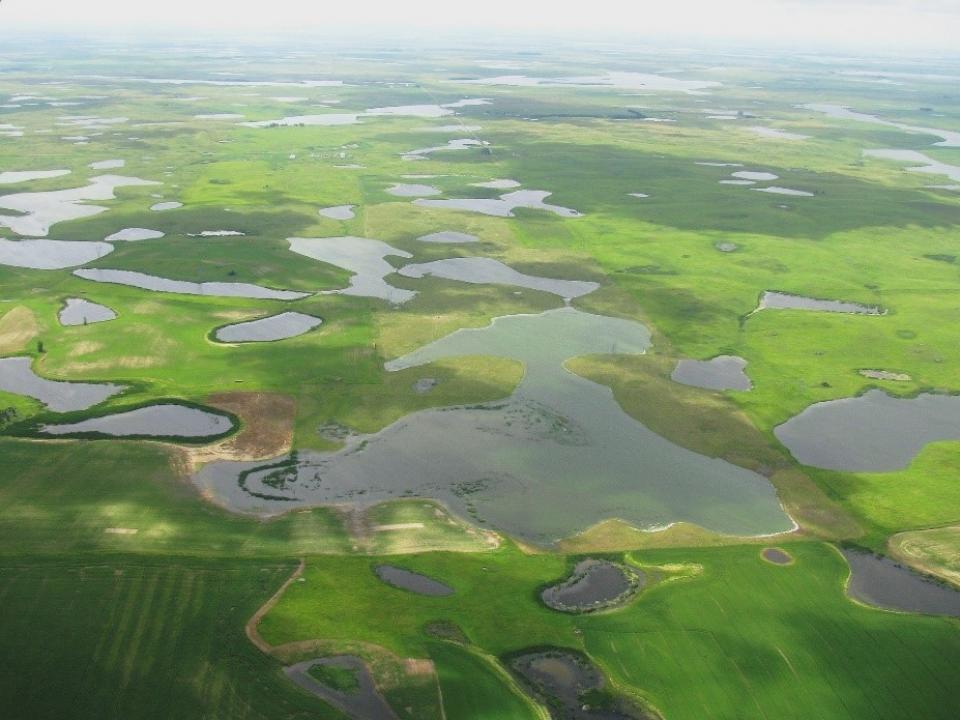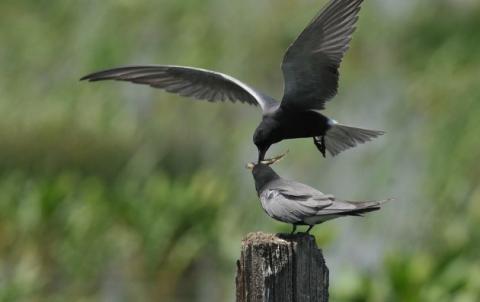The Open Ocean Trustee Implementation Group’s project to restore freshwater nesting habitat for black terns in North and South Dakota is proving very successful. The Restoration of Black Terns in North and South Dakota project is relying on six agency partners to acquire conservation easements in grassland and wetland nesting habitat from willing sellers.
The black tern is a migratory bird and one of the 93 bird species injured by the Deepwater Horizon oil spill. Wildlife biologists have determined that one of the best ways to restore bird populations is to protect their nesting habitat which, for black terns, means focusing on the Prairie Pothole Region of the Midwest.
Black terns prefer to nest in areas that support ponded wetlands with emergent vegetation, that is, plants that grow both above as well as below the water’s surface. They build their nests on the dead and flattened vegetation of the previous year. These nests, which rest near or on the water’s surface, are vulnerable to flooding and therefore dependent on relatively stable water levels.

Identification of the best black tern habitat for the project relied on the expertise of the U.S. Fish and Wildlife Service Habitat and Population Evaluation Team, a group that, with various partners, has used scientific data and landscape-scale conservation planning to identify and conserve migratory bird habitat for more than 25 years. Using the Service’s waiting list of willing sellers, priority easement locations for black terns were identified.
Protecting black tern habitat in the Prairie Pothole Region means not only protecting the wetlands on which they nest, but also the surrounding grasslands that absorb rainfall and keep water levels in ponded wetlands from extreme fluctuations that can flood tern nests.
Surrounding grasslands have other benefits for these birds. While black terns forage in ponded areas, it is the buffering grasslands that reduce pesticide inflows and allow for larger populations of invertebrates and small fish, the bird’s major foods on the breeding grounds.
While one year remains for the project, the Trustees, their partners, and willing sellers have already protected valuable black tern habitat. As a result of stable land prices and a long list of willing sellers, the Trustees have used their $6.2 million project budget to purchase conservation easements that will perpetually protect 3,704 acres of wetlands and 3,166 acres of grasslands in North Dakota and 439 acres of wetlands 496 acres of grasslands in South Dakota.
Get future updates delivered directly to your inbox. Subscribe today for Gulf Spill Restoration news and updates.


